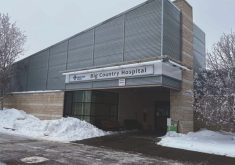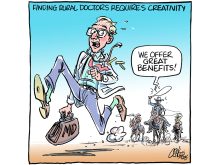Saskatchewan is expecting a $1 billion surplus in the next fiscal year, thanks to resource revenue.
Finance minister Donna Harpauer tabled the 2023-24 budget March 22. It forecasts revenue of $19.7 billion and spending of $18.7 billion.
“There are no tax increases and no new taxes included in this budget,” she said.
There were also no tax cuts.
The government is planning to spend less than it did in both 2021-22 and last year. Harpauer has often said that one-time windfalls should not be incorporated into the budget. The government intends to reduce operating debt instead.
Read Also

Organic farmers urged to make better use of trade deals
Organic growers should be singing CUSMA’s praises, according to the Canadian Chamber of Commerce.
Several farm organization spokespersons said that’s a good idea in a time of rising interest rates.
Saskatchewan Association of Rural Municipalities president Ray Orb welcomed additional health care spending, which will top $7 billion.
“Whenever there is an increase like this, we’re really pleased.”
The budget allocated $55.5 million to recruit 250 full-time and expand part-time positions in rural and remote locations. It also adds $42.5 million to address the surgical backlog.
“Six thousand more surgeries will bring the total to 103,000 surgeries this year,” Harpauer said during her speech.
“Mr. Speaker, this investment will reduce the surgical wait list to its pre-pandemic level by March 2024, which is a year ahead of schedule.”
The health budget will add 36 acute care beds at Royal University Hospital in Saskatoon and 28 at Regina’s Pasqua Hospital and $9 million to enhance emergency services in rural and remote areas.
The education budget is $4 billion, including $23 million to start and operate the new Saskatchewan Distance Learning Corp.
The 27 school divisions will receive $2 billion in operating funds, but that falls short of what is required, said the Saskatchewan School Boards Association.
President Jaimie Smith-Windsor said the operating increase doesn’t cover expenses.
“This budget contributes to the existing instability and continuing erosion of the publicly funded education system, and school boards are increasingly concerned about that,” she said.
On the capital side in rural areas, funding is set aside to begin planning a new Kindergarten to Grade 12 school in Carlyle and the renovation and expansion of Greenall High School in Balgonie, ongoing construction of new K-12 schools in Blaine Lake, Carrot River and Lanigan, minor renewal projects to consolidate the elementary school into the high school in Kelvington and renovations at Medstead Central School, and ongoing renovation at Kyle Composite.
Municipalities learned earlier this month they would receive record revenue sharing money from the province. Revenue sharing is based on three-quarters of one point of the PST from two years prior.
Rural municipalities will receive about $10 million more this year than last, at $84.9 million.
The new Firearms Secretariat, implemented to support the chief firearms officer after the province established that position last year, is receiving $8.9 million, including capital spending.
The government introduced the Saskatchewan Firearms Act in December to look after licensing, storage and other aspects of gun ownership, and the budget will support the administration of that legislation.
Orb said SARM members appreciate increased funding for policing. This budget allocated $7 million to establish the planned provincial marshal service that is expected to be in place by 2026 and boosted funding to the RCMP by $11 million to $246.9 million.
“We would have liked to have a little bit more for the RCMP, but we’re hoping the marshals program will help the RCMP in their day-to-day efforts,” he said.
















